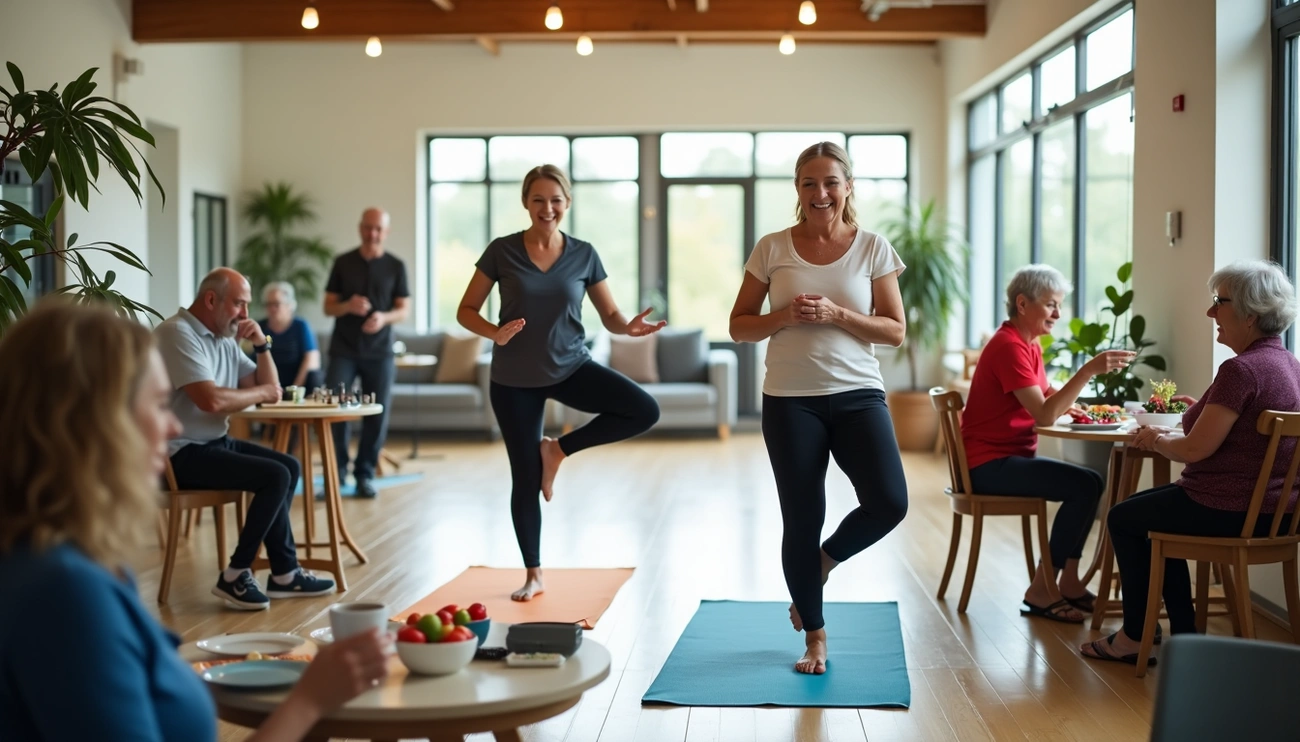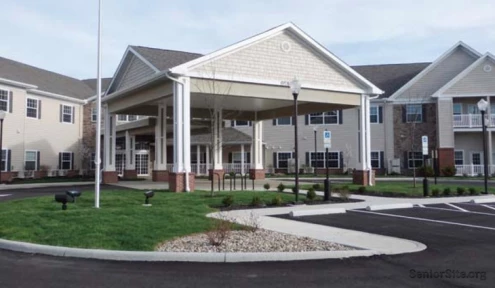A Path to Better Health and Longevity
In recent years, there has been a remarkable shift in how we approach fitness for older adults. Strength training, once considered the domain of younger athletes, is now experiencing a resurgence among seniors. This trend is not just about building muscle; it’s about enhancing overall health, maintaining independence, and improving quality of life as we age.
The Growing Popularity of Strength Training for Seniors
The fitness landscape is evolving, with strength training emerging as a frontrunner in exercise trends for 2025. According to the American College of Sports Medicine (ACSM)’s worldwide fitness trend survey, strength training is predicted to be a leading trend, particularly appealing to women more than ever before. This shift is driven by increasing awareness of the numerous benefits that resistance exercises offer to older adults.
Dr. Alex Germano, a physical therapist and fitness coach, notes, “Women are becoming more educated about the importance of strength training for optimizing bone health and longevity, and post-menopausal women are finally hearing the messaging about how important strength training is. This growing understanding is driving more seniors to seek out resistance training programs, moving away from solely moderate-intensity, interval-based training.
The Benefits of Strength Training for Seniors
- Combating Age-Related Muscle Loss (Sarcopenia)
As we age, our bodies naturally begin to lose muscle mass and strength, a process known as sarcopenia. This decline typically starts around age 30 and accelerates after 60. Dr. Stephanie Faubion, medical director of Mayo Clinic’s Center for Women’s Health, states, “After the age of 50, women lose 8% of their muscle mass yearly. Strength training is crucial in counteracting this loss, helping seniors maintain muscle mass and strength well into their later years.
- Improving Bone Density
Bone density naturally decreases with age, increasing the risk of fractures and osteoporosis, especially in postmenopausal women. While it’s a common misconception that only weight lifting builds bone density, Dr. Faubion clarifies, “It’s weight-bearing exercises, not weight-lifting exercises, that are most effective at building bone density. This includes activities like walking and resistance training that put stress on the bones, stimulating them to maintain or increase density.
- Enhancing Functional Fitness and Independence
Functional fitness, which involves exercises that mimic daily activities, is becoming increasingly popular among seniors. Jerome Draculan, a NASM-certified personal trainer, explains, “The goal of this trend is to get your body ready for daily tasks without straining it, such as playing with your children or carrying groceries. By incorporating strength training into functional fitness routines, seniors can maintain their ability to perform everyday tasks independently.
- Reducing the Risk of Falls
Balance and coordination often decline with age, increasing the risk of falls. Strength training, particularly when combined with balance exercises, can significantly improve stability and reduce fall risk. Dr. Faubion emphasizes, “Falls are of big concern and the largest cause of morbidity as we age. This is why balance training is an important consideration.
- Improving Overall Health and Longevity
Recent research has shown that strength training can have profound effects on overall health and longevity. A comprehensive study published in the Journal of Aging and Physical Activity found that after a 12-week functional fitness program:
- 81% of participants reported improved mobility
- 73% noted increased strength in performing daily tasks
- 65% experienced better balance and reduced fear of falling
Moreover, physically active individuals reduce their risk of cognitive decline by a remarkable 38%, with even low to moderate levels of physical activity associated with a 35% lower risk compared to sedentary lifestyles.
Incorporating Strength Training into Senior Fitness Routines
The CDC recommends that older adults engage in muscle-strengthening activities involving all major muscle groups at least two days a week. Here are some practical tips for seniors looking to incorporate strength training into their routines:
- Start Slowly and Progress Gradually: Begin with lighter weights or resistance bands and gradually increase as strength improves.
- Focus on Functional Movements: Incorporate exercises that mimic daily activities, such as squats (simulating sitting and standing) or arm curls (for lifting objects).
- Combine with Balance Exercises: Include exercises that challenge balance, such as single-leg stands or heel-to-toe walks.
- Use a Variety of Equipment: Experiment with dumbbells, resistance bands, and body weight exercises to keep routines interesting and target different muscle groups.
- Prioritize Proper Form: Consider working with a certified fitness instructor or physical therapist to ensure correct technique and reduce injury risk.
- Listen to Your Body: Allow adequate rest between sessions and be mindful of any pain or discomfort.
Overcoming Challenges in Starting Strength Training
While the benefits are clear, seniors may face challenges when beginning a strength training program:
- Fear of Injury: Many seniors worry about getting hurt. Starting with gentle movements and working with a professional can help alleviate these concerns.
- Limited Mobility: Modify exercises as needed and focus on gradual improvement rather than immediate results.
- Lack of Experience: Many seniors may be unfamiliar with strength training techniques. Seeking guidance from a certified trainer or joining senior-specific fitness classes can provide the necessary education and support.
- Underlying Health Conditions: Always consult with a healthcare provider before starting any new exercise program, especially if you have existing health conditions.
The Future of Senior Fitness
As we look towards the future, the trend of strength training for seniors is likely to continue growing. The Global Consensus on Optimal Exercise Recommendations for Enhancing Healthy Longevity in Older Adults, published in The Journal of Nutrition, Health & Aging, emphasizes the need for tailored exercise plans that include a mix of aerobic activities, strength training, and balance exercises.
Professor Mikel Izquierdo from the Public University of Navarre states, “Exercise isn’t just about physical fitness—it’s a tool for preserving independence, reducing chronic disease, and enhancing overall well-being. This sentiment encapsulates the growing recognition of strength training as a crucial component of healthy aging.
Conclusion
The resurgence of strength training among seniors represents a significant shift in our approach to aging and fitness. By incorporating resistance exercises into their routines, older adults can combat age-related muscle loss, improve bone density, enhance functional fitness, reduce fall risk, and potentially extend their lifespan. As research continues to underscore the benefits of strength training for seniors, it’s clear that this trend is not just a passing fad but a fundamental component of healthy aging.
For seniors considering starting a strength training program, the message is clear: it’s never too late to begin. With proper guidance, gradual progression, and a focus on functional movements, strength training can be a safe, enjoyable, and highly beneficial addition to any senior’s lifestyle. As we continue to redefine what it means to age well, strength training stands out as a powerful tool for maintaining health, independence, and quality of life in our golden years.












